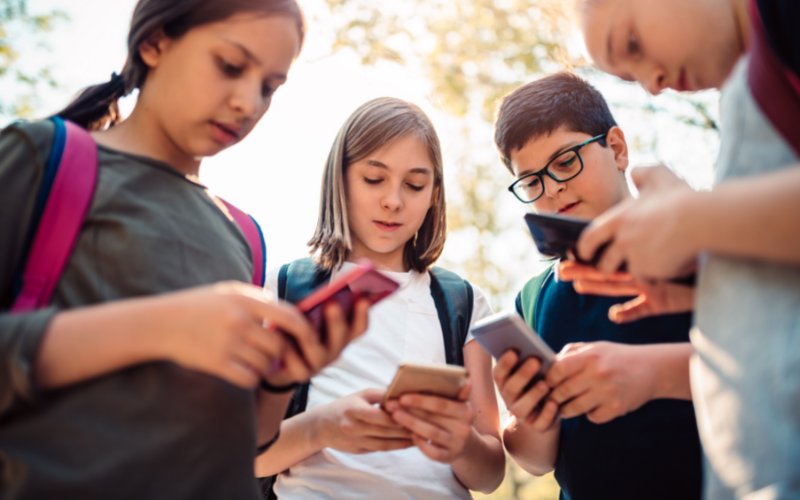At least one person in most families has a phone. Nowadays, people can’t live without phones and other electronic devices. But in the past, there were no phones or other electronic devices. Over 2.16 billion kids under 14 have phones worldwide according to https://www.google.com/search?q=how+many+kids+have+phones+worldwide&rlz=1CAJIKU_enUS1112&oq=how+m&gs_lcrp=EgZjaHJvbWUqBggAEEUYOzIGCAAQRRg7MgYIARBFGDsyBggCEEUYOzIGCAMQRRg7MgYIBBBFGDkyBggFEEUYPDIGCAYQRRg8MgYIBxBFGDzSAQg0MTMzajBqN6gCALACAA&sourceid=chrome&ie=UTF-8&safe=active&ssui=on.
Phones can sometimes be bad for kids. If kids play a lot of video games, it can affect their eyes. On average, kids spend over three hours daily on the phone.
There are also good things about phones. For example, if someone is in another country who is your relative, you can talk to them by phone.
In past years, between 50% and 90% of people have eye problems because they continue to watch their phones for at least 3 hours every day. There is a solution to this problem
If parents let their kids spend less time on phones, this can help kids avoid getting eyeglasses. In global impact, there are 300 million kids with eyeglasses.
Phones help kids keep up with what’s happening around the world and provide social support. However, some countries in Asia, like India, Pakistan, and Bangladesh, are strict about phone use in school. They don’t allow children to bring and use phones in school.
But some countries like the USA, England, and Canada are not strict about phones in schools. They allow people to bring phones to the school. But kids can’t use their phones in the classrooms or hallways.
They allow kids to bring their phones so the kids can communicate any emergency with their parents and other people in the family.
Some people think phones are not good for kids at that young age. Phones are making kids’ lives harder to live. Some people think childhood is for them to play outside with their friends and not to stay on the phone for hours.






























